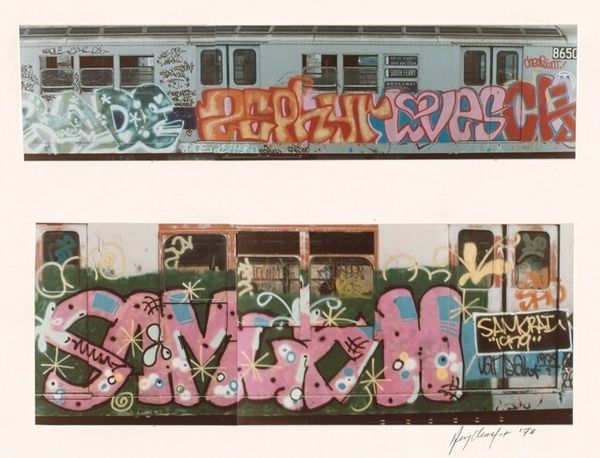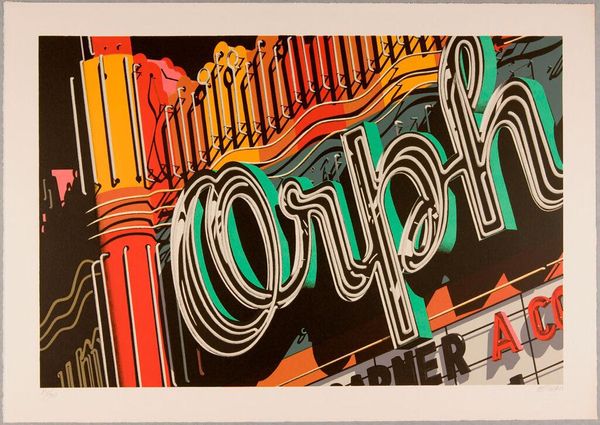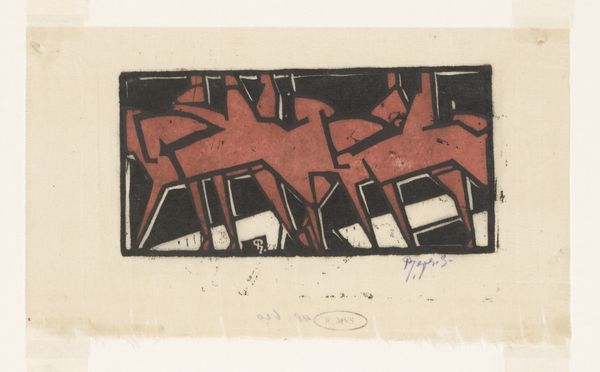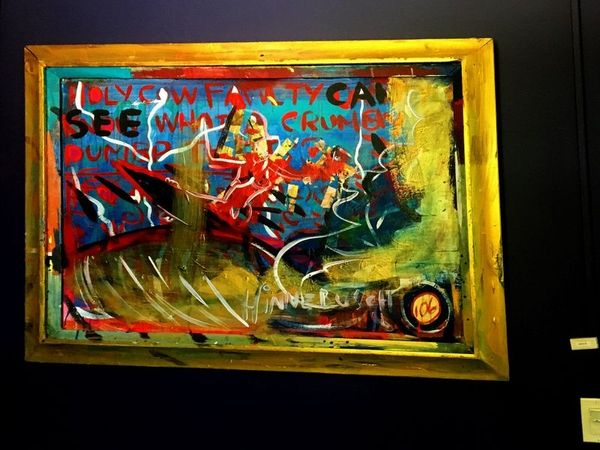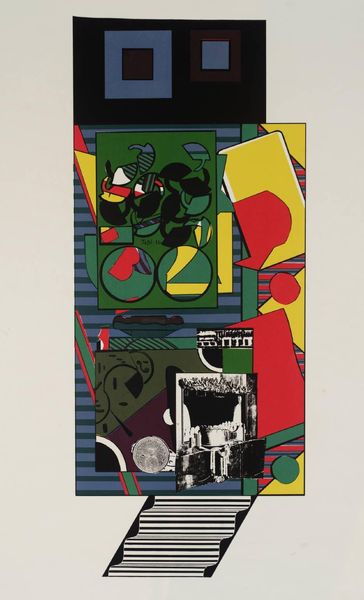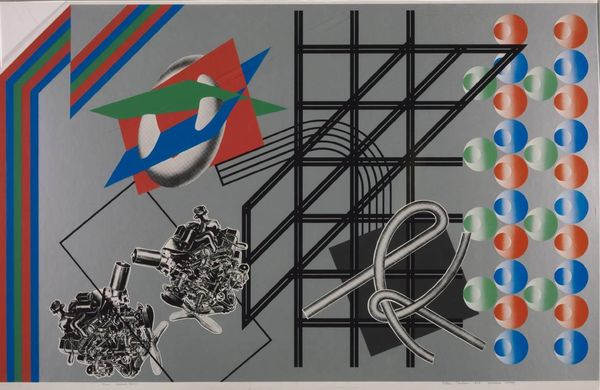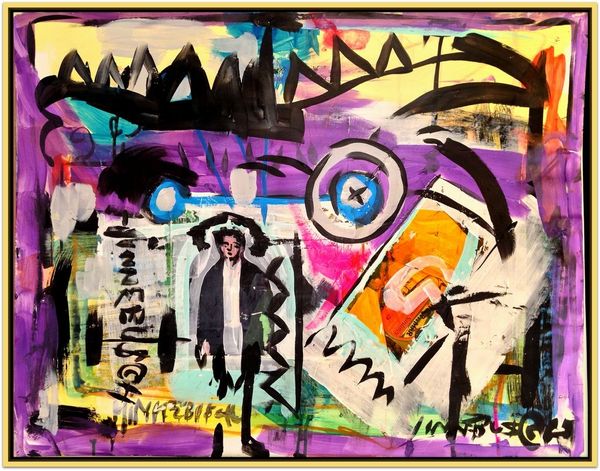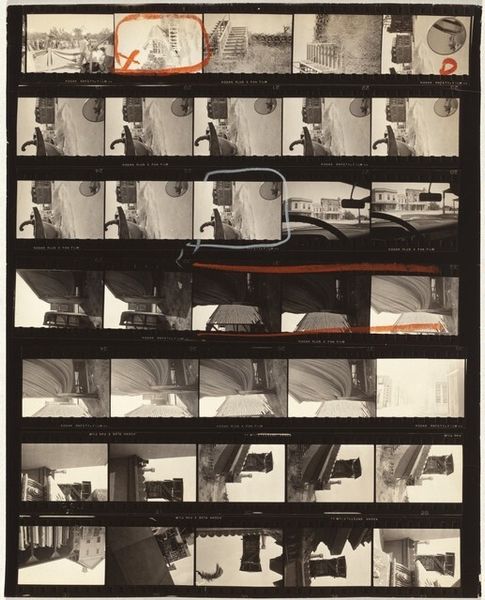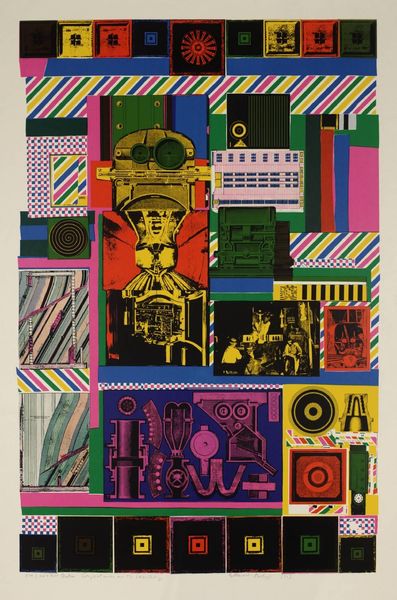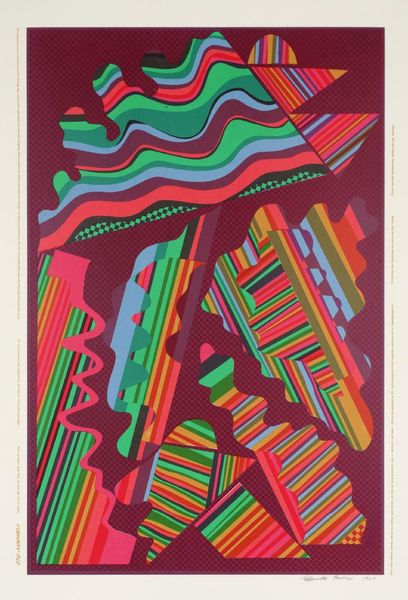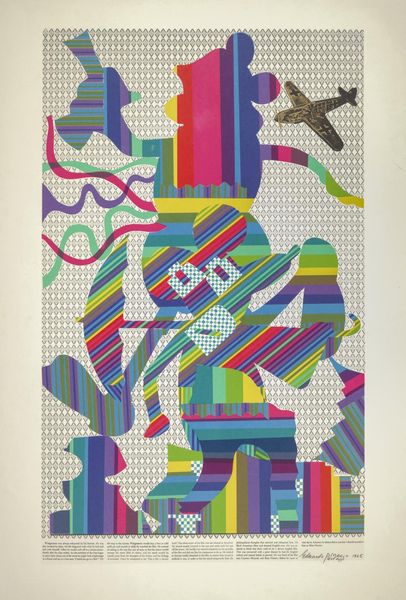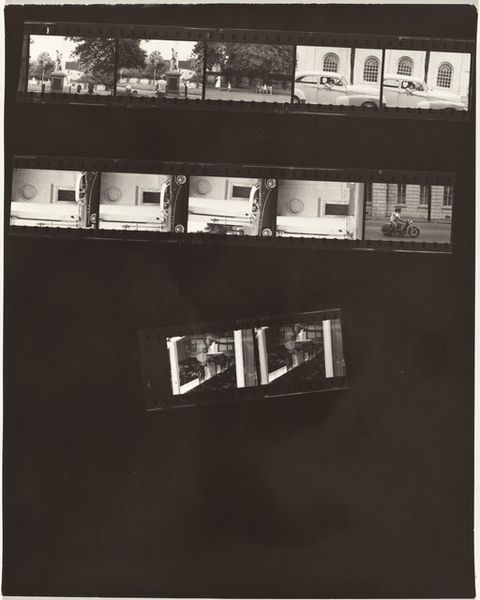
Dimensions: image/sheet (top): 7 × 36 cm (2 3/4 × 14 3/16 in.) image/sheet (bottom): 7.62 × 37.47 cm (3 × 14 3/4 in.) mount: 32.39 × 52.71 cm (12 3/4 × 20 3/4 in.)
Copyright: National Gallery of Art: CC0 1.0
Curator: Here we have Henry Chalfant’s photographic documentation of "Lee / Open the Pig by Lee," taken in 1979. It captures a quintessential moment of New York City graffiti art. What strikes you first? Editor: Wow, that’s raw energy bursting off the train car. It feels…rebellious, almost like a vibrant scream against the mundane steel and brick. Curator: The choice of medium is fascinating here – aerosol paint as a tool for claiming public space. Think about the accessibility, the immediate impact... spray cans transformed these train cars into rolling canvases. There's a definite social statement being made. Editor: Absolutely! It’s ephemeral, of course, designed to be fleeting. It's both brazen and vulnerable. I love how the letters morph and dance; you almost don't need to "read" it to understand the power it exudes. The colors pop with an almost defiant joy. Curator: Right, the act of tagging became a commentary on urban life. "Lee / Open the Pig by Lee" demonstrates how the physical environment became a site of cultural production, reshaping perceptions and challenging established artistic hierarchies. Editor: Looking closer, I'm drawn to the way the artists worked around the architecture of the train. The windows become part of the composition, not an obstacle. Each shape of each letter bends, twists, pushes up or to the side. Curator: Consider too the infrastructure required. Accessing the trains, procuring materials, organizing collaborations – it’s a network of shared resources and illicit know-how fueling this cultural moment. Editor: It is quite amazing how this seemingly crude expression represents incredible technique in both planning and physical action. In effect, that "rough" look of the tag, has incredible smoothness to it. I imagine doing such a work, not only illicitly, but working around the trains structure in all types of weather. It adds a deep physical commitment from its creators, which has really given the overall form much impact. Curator: Agreed, graffiti transformed everyday industrial design into something vital and disruptive. The very nature of how art and the city would collide. Editor: It makes you wonder how such a piece resonated within the communities it passed through. And, conversely, how they might feel in its absence today. I definitely get the message behind their need to put it up.
Comments
No comments
Be the first to comment and join the conversation on the ultimate creative platform.
